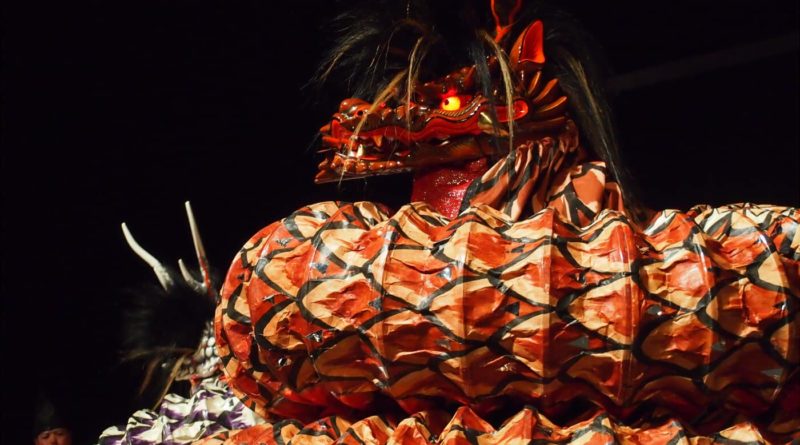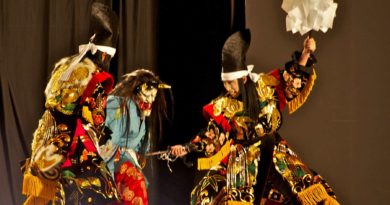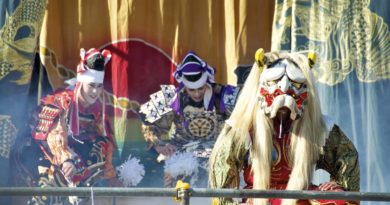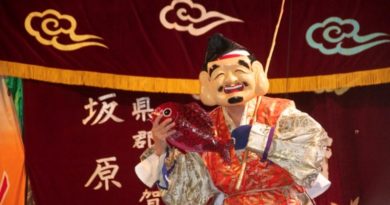Yamata-no-Orochi: Here There Be Snake Demons
Let’s get one thing straight: I’ve seen quite a lot of kagura. But for some reason, I had never seen the classic Yamata-no-Orochi before, despite it’s wild popularity in the kagura repertoire. I staked out a prime seat (front row, stage left) and waited, trusty camera in hand, excited to finally see this play brought to life by the fantastic cast of the Asakita Kagura Troupe. And I wasn’t the only one. The crowd was clustered around center stage seating, some were chatting about the protagonist Susano-o-no-Mikoto and his role in Japanese mythology, children were bouncing in their seats. But I could tell I was in for a good show when the crowd enthusiastically cheered, whistled, and applauded when the MC was giving her speech about audience participation. Sometimes the shows can be sort of hit or miss depending on the crowd, and this crowd was knocking it out of the park before the show even started.
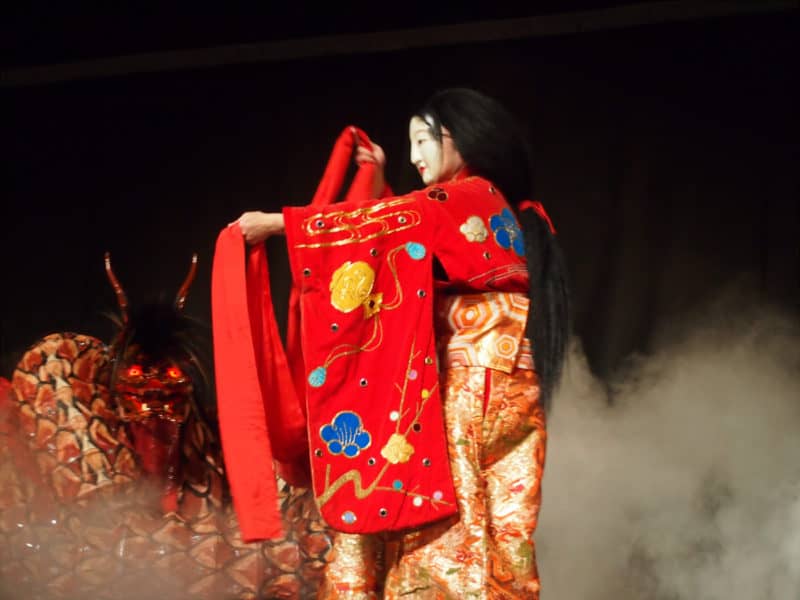
So let’s get into the show. We begin with a beautiful maiden out in the woods alone. It’s a horror movie classic. She’s young and pretty, and then from the shadows, two pairs of glowing red eyes appear. And I mean literally glowing. You want to shout “look behind you!” as two massive snake demons slither their way from either side of the stage to devour the maiden (who puts up a good fight, let me tell you). The snake demon costumes are unlike anything I have ever seen before and operated so effortlessly that you are fully willing to suspend belief and believe that these are, in fact, actual living and breathing snake demons. Their bodies are long and move with a dangerous grace with dragon-like heads and crazy hair that they whip back and forth. Together these snake demons twist around the maiden until she vanishes, setting the tone for the entire play: these snake demons are powerful and fierce, and they are not here to make friends. It helps that the entire first act contains no dialogue whatsoever, just the accompanying music that works itself into a frenzied finale before transitioning to the second act.

Enter the hero: Susano-o-no-Mikoto. A legendary figure in Japanese mythology, the younger brother of the Sun Goddess, Amaterasu-no-Mikoto, with a name awkward to spell in English and even more awkward to pronounce. Typically portrayed as a bad boy in Japanese mythology, here is he portrayed as a hero. He stomps across stage, radiating power, as he introduces himself and goes to help an elderly couple he hears wailing in grief over the loss of their daughter to a creature called Yamata-no-Orochi, the eight-headed snake demon whose two heads we saw in act one. Susano-o hatches a plan to destroy the beast by getting it drunk on poisoned sake and then delivering the final blow. He enlists the help of the elderly couple and their last remaining beautiful daughter, and together they prepare the sake.
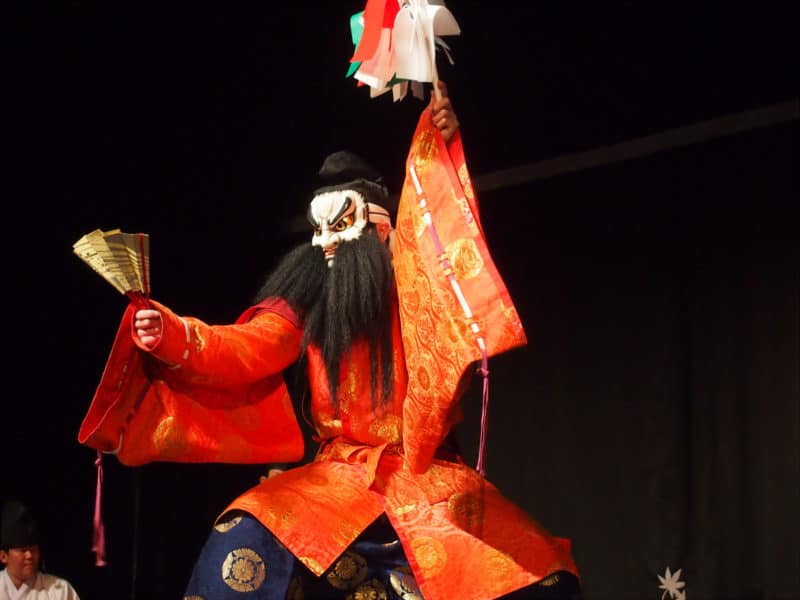
Okay, the elderly couple may have only been in one scene but they were absolutely entertaining. The masks are so exaggerated and comical, and the old woman added some fantastic comedy elements that really played well to both Japanese and Western audiences. They carry in a taru barrel of sake and the old woman stirs it carefully, presumably adding poison, and then she takes a sip and nods profounding, making an “O” with her arms, the Japanese version of making an “o” with your thumb and index finger to say “ok” — my question is just how much of a heavy tolerance for alcohol does this woman have to withstand a sip of sake with enough poison to topple an eight-headed snake demon?! She’s everything I aspire to be when I’m 900 years old.

After the sake is ready, Susano-o does his magic while the elderly couple says a warm and heartfelt goodbye to their last remaining daughter in a very touching scene. The stage is set for the final battle and from the wings of the stage, Yamata-no-Orochi appears. Practically hissing from the shadows, eight incredibly ornate and incredibly long-tailed snake demons all thrashing and snarling emerge in what can only be described as jaw-dropping glory. I’ve never seen anything quite like this on stage before and I think I audibly gasped. Each snake demon was a different color with gold or silver details to catch the stage lights as they shimmied and wriggled and slithered around with the arrogant pride that only a demon could have, all in perfectly choreographed harmony. And the crowd went WILD. Children were squealing with delight when the eight snakes rushed to the tip of the stage, adults cheered and whistled and howled when all of the snakes twined themselves into a massive ring and spun madly in a frantic circle, long tails spilling off stage. This is kagura perfection.
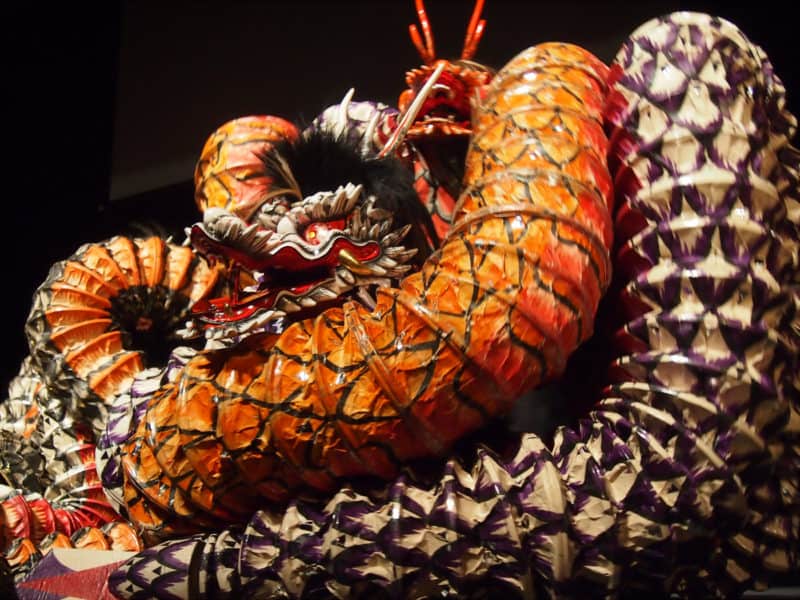
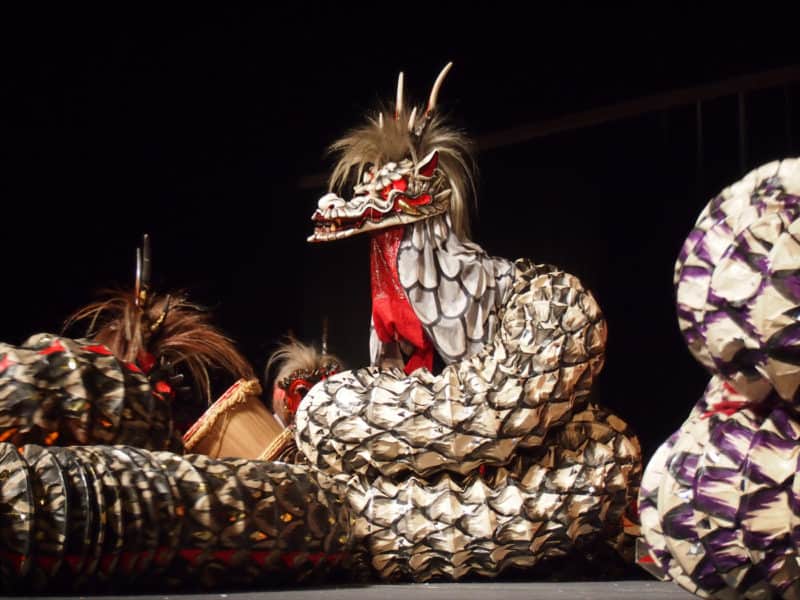
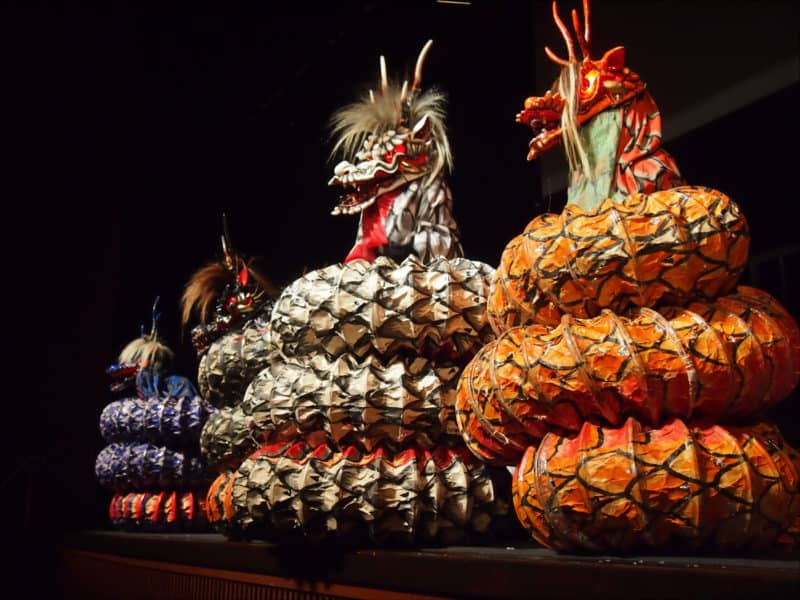
As the frenzy of the snake demons hits its peak, they each down a barrel of the poisoned sake and gradually, their movement dulls and slurs until they each coil up in a drunken sleep. Seeing his chance, Susano-o slinks onto the stage, slowly creeping up one of the heads, his sword raised. The tension is palpable as he brings it down, waking the nest of demons from their stupor and the battle begins. Eight versus one hardly seems fair, but then again, Susano-o is no ordinary man, and one by one, he cuts the heads off the demons, placing each one at the tip of the stage like a trophy. But Yamata-no-Orochi doesn’t go down easily. Despite being drunk and poisoned, the demon makes Susano-o work for it, twisting around him like a giant boa constrictor before our hero narrowly escapes. In the final battle with the last head of the demon, Susano-o emerges victorious and discovers a sword in the belly of the beast. This sword becomes one of the three sacred imperial regalia of Japan (the sword, the mirror, and the jewel). Our play ends with tremendous fanfare and the deafening applause of the audience.
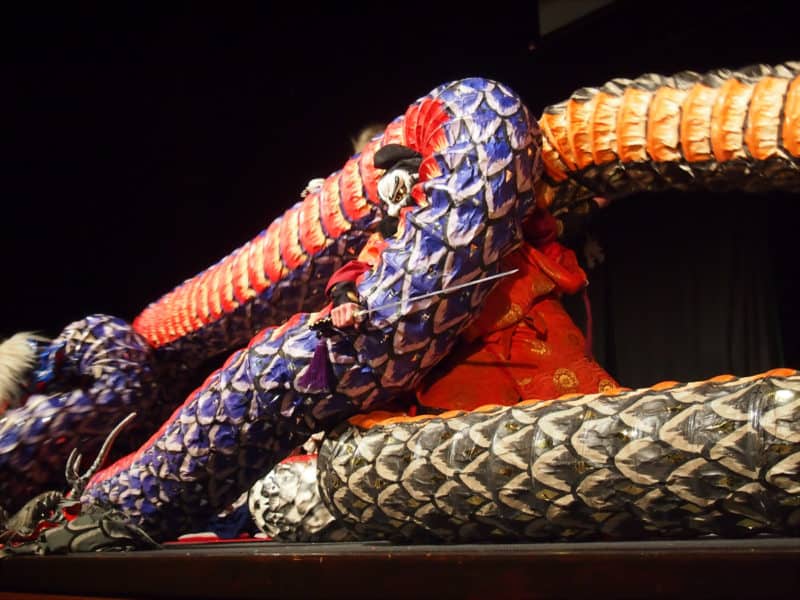
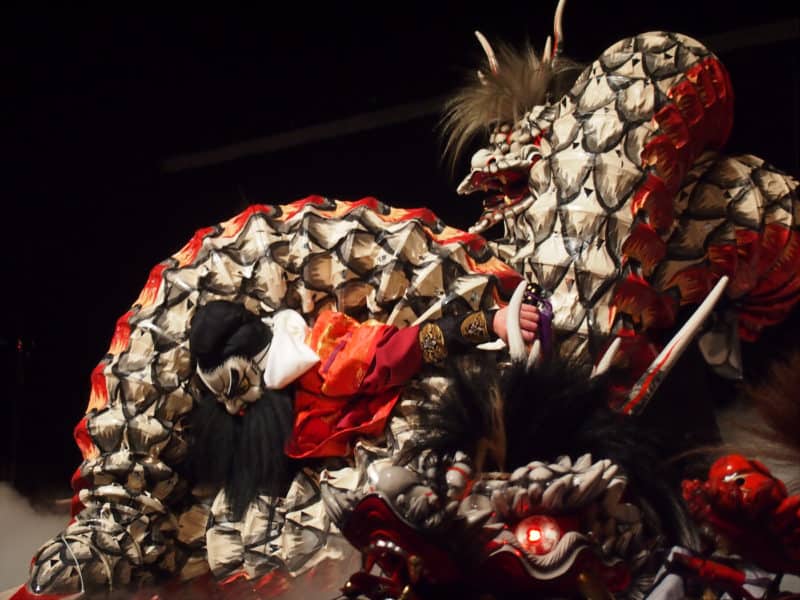
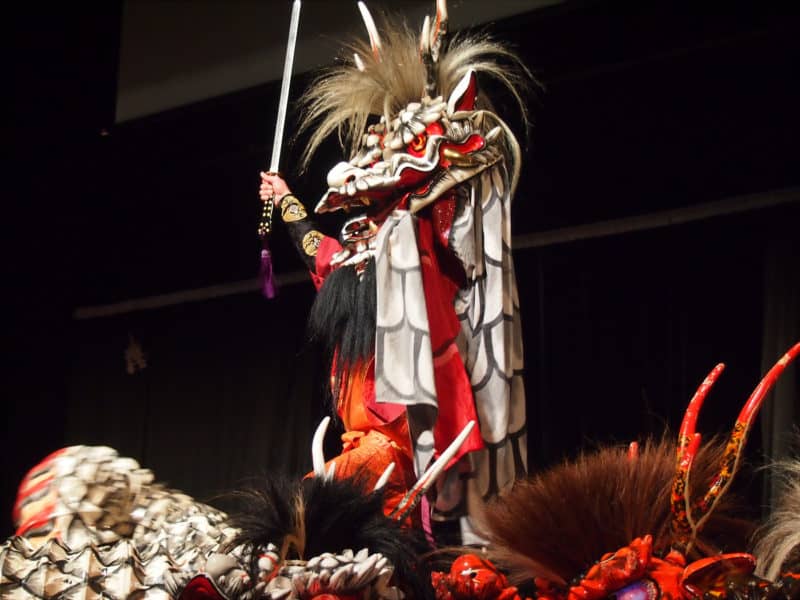
Truly a remarkable and what must be a physically exhausting show, this play has everything. Captivating, dazzling, dynamic, and with just the right amount of Japanese mythology, Yamata-no-Orochi is the perfect way to not only introduce kagura to an international audience but to capture their hearts and imaginations.
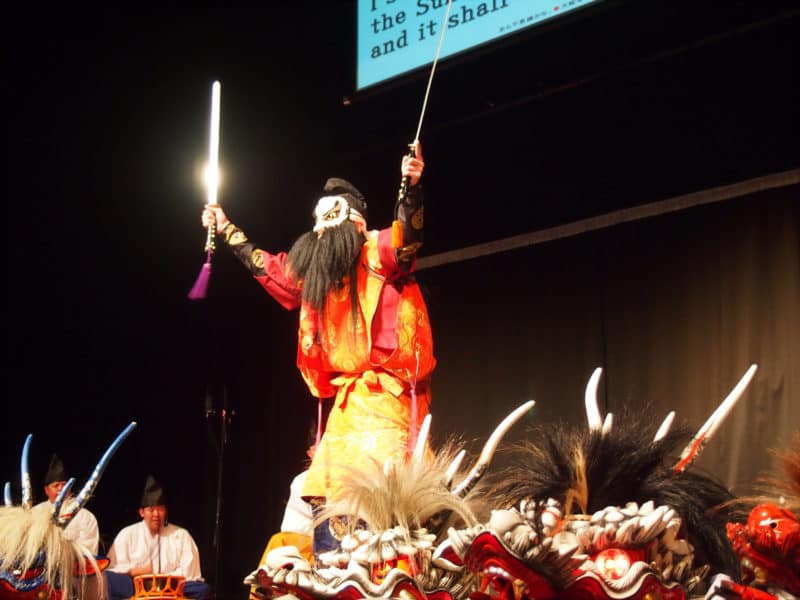
Feeling left out? Make sure you don’t miss a performance by checking out the official Hiroshima Kagura homepage and give them a like on Facebook!


